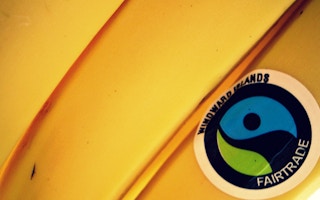Trade and the progress of human civilization have always been inextricably linked.
However, the fact is that trade is not always civilized… far from it. Power imbalances and the egregious buying practices of international traders have resulted in the marginalization of millions of developing world producers. These are the very producers that we rely upon for the everyday products such as coffee, tea and cocoa.
The astonishing rise of Fairtrade and other certification schemes such as Utz and Rainforest Alliance is testimony of the need for effective action to support producers and protect their interests. Fairtrade is by far the market leader in the UK and has brand recognition and support that any commercial marketer would relish.
So when not one but two major companies (first Mondelez and now Sainsburys) reset their relationships with Fairtrade, it is clear that something is up.
The two cases are different, but there is an important connection: the relationship between brands and their consumers. Brands only exist through their relationship with consumers and for brand owners that relationship is the most precious of things.
Third-party certification has helped brands. But what we are starting to witness is the inevitable reassertion of the consumer relationship by brand owners.
Supporting brands wasn’t Fairtrade’s primary aim. It was to support and protect producers.
Fairtrade certified producers benefit from a minimum price and a Fairtrade premium to be invested in social, environmental and productivity improvements. The price floor and premium are often cited as Fairtrade’s biggest impact. But, important though these are, I have always thought different: Fairtrade’s biggest impact lies in its requirement that producers organize themselves, usually – but not always – into cooperatives.
It is through these organizations that producers make decisions on their use of the premium. But being well organized is so much more important than that. It increases negotiating power, enables access to markets, capital and loans. It better enables quality and productivity improvements through access to agronomy services. And it helps support community cohesion and political maturity.
“
So when not one but two major companies (first Mondelez and now Sainsburys) reset their relationships with Fairtrade, it is clear that something is up.
In short, it lies at the heart of Fairtrade’s concern with producer empowerment, the logical extension of which was achieved when producer organizations became co-owners of the Fairtrade system.
A further requirement of Fairtrade has been “all that can be, must be”. The rule was that if an ingredient in a manufactured product was available as Fairtrade then it must be used. As a result, chocolate manufacturers have been investing more on sugar premiums – a bigger supply chain risk – than on cocoa.
Such rules made it extremely difficult for Fairtrade to scale up its impact for core commodities. Scaling up is what Fairtrade needed to do but its multi-stakeholder, rules-based system rendered it uniquely ill-equipped compared with other certifiers to adapt and respond to producers; needs and market signals.
After years of debate, Fairtrade finally relaxed its “all that can be” rule to enable sourcing of a core commodity on Fairtrade terms without front of pack labeling.
Mondelez took the opportunity to scale up massively its cocoa buying commitments without incurring the cost of the sugar premiums and, as a result, had to drop the Fairtrade label from the front of its packs. Mondelez clearly felt it could weather this and while it would never say as much I believe would have seen this as an advantage in the long term.
Consumers concluded “no label” meant a withdrawal of support leading to a backlash of criticism but this was only temporary and very much mitigated by Fairtrade’s public support. From 2018 Cadbury will use the Cocoa Life logo, the label of Mondelez’s own sustainable cocoa sourcing scheme, on the front of its chocolate brands.
Sainsbury’s has been a pioneer of Fairtrade in the UK and its game-changing decision in 2008 to stock only Fairtrade bananas is the stuff of Fairtrade legend. It led the field and others followed. So its decision to drop the Fairtrade logo on its tea in favour of its own Fairly Traded scheme is significant.
By focusing on its own proprietary scheme, Sainsbury’s aims to reclaim the relationship with the consumer – it believes its brand values are strong enough for customers to trust its own scheme, and it intends its brand equity to be reinforced as a result.
But Sainsbury’s is going further and appears to be insisting that it plays a role in determining the use to which premiums are put. Now, Fairtrade is awash with apocryphal stories as to how premiums have allegedly been (mis)used.
And in my experience they were just that – apocryphal. But it is true that some producer groups need help on decision making and enacting those decisions, which is where the likes of Sainsbury’s could help. But to take away the right of producers to decide is strangely disempowering. It is also high risk for Sainsbury’s.
But the bigger risk is to Fairtrade and to producer empowerment. For where Mondelez and Sainsbury’s have gone, others will follow. Because a product is not Fairtrade certified does not make it inherently unfair. Mondelez and Sainsbury’s are good companies that will treat producers fairly. But will those that follow place the emphasis on organization and empowerment? Somehow I doubt it.
Fairtrade may have changed the landscape forever but which other brand owners are considering their use of the Fairtrade logo and how long will it be before Fairtrade becomes a footnote in the history of sustainability and trade? That day just moved a little closer.
Rob was Chief Executive of Fairtrade International from 2007-2012 and is currently chief executive officer of SustainAbility. This article is republished from the SustainAbility blog.


















